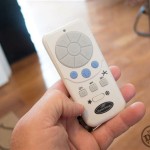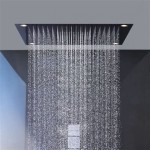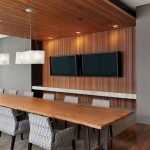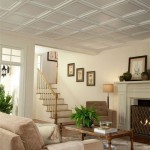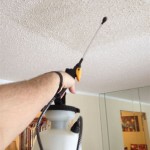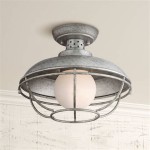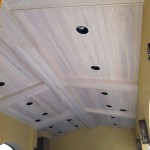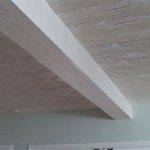Understanding Ceiling Light Fixture Parts: A Comprehensive Diagram and Guide
Ceiling light fixtures are fundamental components of interior design, providing illumination and contributing to the overall aesthetic of a space. While the appearance of these fixtures can vary greatly, their basic construction relies on a common set of parts. Understanding the function and identification of these individual components is crucial for installation, maintenance, repair, and informed selection when purchasing new fixtures. A detailed parts diagram serves as an invaluable tool for both homeowners and professionals seeking to navigate the complexities of ceiling lighting.
This article provides a comprehensive breakdown of the various components found in typical ceiling light fixtures, accompanied by explanations of their purpose and common variations. Reference to a ceiling light fixture parts diagram will enhance the understanding of the described components. The goal is to equip readers with the knowledge necessary to confidently identify and work with these essential elements of home and commercial lighting systems.
Key Components of a Typical Ceiling Light Fixture
A standard ceiling light fixture comprises several essential elements that work together to provide illumination. These components can be broadly categorized into the mounting hardware, the electrical components, and the decorative elements. Each part plays a critical role in the fixture's functionality and overall appearance.
Mounting Bracket (or Crossbar): This is the primary structural element that attaches the fixture to the electrical junction box recessed in the ceiling. The junction box is a crucial safety feature, providing a safe enclosure for electrical connections. The mounting bracket, typically made of metal, is screwed or bolted to the junction box, providing a secure anchor point for the entire light fixture. Different types of mounting brackets exist to accommodate various fixture designs and junction box configurations. Some brackets are simple crossbars, while others are more complex plates with multiple mounting points.
Nipple: A threaded tube that extends from the mounting bracket, often used to secure the canopy or base of the fixture. The nipple allows the installer to adjust the distance between the mounting bracket and the fixture's base, ensuring a flush and secure fit against the ceiling. This is especially important when dealing with uneven ceiling surfaces. The length of the nipple can vary depending on the fixture design.
Canopy (or Base): This is the decorative housing that covers the mounting bracket and the electrical connections, concealing them from view and providing a finished aesthetic. The canopy is typically made of metal, glass, or plastic and comes in a variety of shapes and sizes to complement the overall design of the fixture. It often attaches to the nipple using a threaded ring or other securing mechanism.
Wire Connectors (Wire Nuts): These small, insulated caps are used to safely connect the electrical wires from the fixture to the wires in the junction box. Wire connectors ensure a secure and insulated connection, preventing short circuits and electrical hazards. They are typically color-coded to differentiate between the hot, neutral, and ground wires. Proper use of wire connectors is essential for safe and code-compliant installation.
Ground Wire: A crucial safety feature, the ground wire provides a path for stray electrical current to return to the ground, preventing electrical shock. The ground wire, typically green or bare copper, is connected to the grounding screw in the junction box and to the corresponding ground wire in the fixture. A properly grounded fixture significantly reduces the risk of electrical hazards.
Socket (or Lampholder): This is the receptacle that holds the light bulb. Sockets are designed to accommodate different types of bulbs, such as incandescent, LED, and fluorescent, each with specific base types (e.g., E26, E12, GU10). The socket provides the electrical connection to the bulb and is typically made of ceramic or plastic to withstand heat. Different types of sockets are available to suit various bulb shapes and sizes.
Light Bulb (or Lamp): The component that produces light. Light bulbs come in a wide variety of types, wattages, and color temperatures, each with different energy efficiency and lifespan characteristics. The choice of light bulb significantly impacts the overall brightness and ambiance of the room. Common types include incandescent, halogen, compact fluorescent (CFL), and light-emitting diode (LED) bulbs. LEDs are generally favored for their energy efficiency and long lifespan.
Shade (or Diffuser): This is a decorative element that surrounds the light bulb, diffusing the light and reducing glare. Shades can be made of glass, fabric, metal, or plastic and come in a variety of shapes, sizes, and colors. The shade's design significantly impacts the light distribution and the overall aesthetic of the fixture. Diffusers are typically made of translucent materials to soften the light and create a more comfortable ambiance.
Retaining Ring (or Shade Holder): This component secures the shade to the socket or fixture body. Retaining rings are typically threaded and screw onto the socket, clamping the shade in place. Different styles of retaining rings are used for different types of shades. Some fixtures use clips or other mechanisms to hold the shade in place.
Variations in Fixture Design and Components
While the basic components outlined above are common to most ceiling light fixtures, variations in design can significantly alter the specific parts and their arrangement. Different types of fixtures, such as chandeliers, pendant lights, and recessed lights, employ different mounting mechanisms and decorative elements.
Chandeliers: These elaborate fixtures often feature multiple arms or branches, each holding a light bulb. Chandeliers typically have a more complex mounting system, often involving a chain or stem suspension. The canopy is often larger and more decorative to conceal the substantial wiring and support structure. The shades, if present, are often smaller and more ornate.
Pendant Lights: These fixtures are suspended from the ceiling by a chain, cord, or rod. Pendant lights often feature a single light bulb or a cluster of bulbs within a decorative shade or enclosure. The mounting system is typically simpler than that of a chandelier, but still requires a secure connection to the junction box. The shade is a prominent design element, influencing the light distribution and the overall style of the fixture.
Recessed Lights (or Can Lights): These fixtures are installed inside a hole in the ceiling, providing a flush or nearly flush appearance. Recessed lights typically consist of a housing (or can) that is installed above the ceiling and a trim ring that is visible from below. The housing contains the electrical components and the socket, while the trim ring provides a decorative finish. Recessed lights often use reflector bulbs or LED modules to direct the light downward.
Flush Mount Lights: These fixtures are mounted directly to the ceiling, with the canopy sitting flush against the surface. Flush mount lights are often used in hallways, closets, and other areas where headroom is limited. They typically have a simple design and a relatively shallow profile.
Semi-Flush Mount Lights: These fixtures are similar to flush mount lights, but they have a slight gap between the canopy and the ceiling. This gap allows for some light to be directed upwards, creating a more ambient illumination. Semi-flush mount lights are often used in bedrooms and living rooms.
Understanding Wiring Diagrams and Safety Precautions
A ceiling light fixture parts diagram is often accompanied by a wiring diagram, which illustrates how the electrical components are connected. Understanding the wiring diagram is crucial for safe and correct installation. The wiring diagram will typically show the hot (black), neutral (white), and ground (green or bare copper) wires and how they should be connected to the corresponding wires in the junction box. Color coding of wires can vary in different regions, so consulting with a qualified electrician is always advisable if there is any uncertainty.
Safety should always be the top priority when working with electrical fixtures. Before beginning any work, always turn off the power to the circuit at the circuit breaker. Use a voltage tester to verify that the power is off before touching any wires. Wear appropriate safety equipment, such as insulated gloves and eye protection. If unsure about any aspect of the installation, consult with a qualified electrician. Improper wiring can result in electrical shock, fire, or damage to the fixture.
Regular maintenance of ceiling light fixtures is also important for safety and optimal performance. Dust and debris can accumulate on the fixture, reducing its light output and potentially creating a fire hazard. Periodically clean the fixture with a soft cloth and a mild detergent. Inspect the wiring and sockets for any signs of damage or corrosion. Replace any damaged components immediately. By understanding the components of a ceiling light fixture and following proper safety precautions, homeowners and professionals can ensure safe and effective lighting in their homes and businesses.
The information provided in this article serves as a general guide. Specific fixture designs may vary, and it is always advisable to consult the manufacturer's instructions and local electrical codes for detailed information and guidance.

How To Install A Ceiling Light Tutorial Lights Fixture Parts

Pendant Wire Canopy Diagram Grand Brass Lamp Parts Llc Diy Light Fixtures

Chain Fixture Ceiling Canopy Diagram Grand Brass Lamp Parts Llc

Mounting Light Fixtures Fine Homebuilding

Jim Lawrence Pendant Lights Fitting Guide

Do You Want To Hang A Glass Shade From Pole Type Fixture Grand Brass Lamp Parts Llc Antique Light Fixtures

Light Fixture Luminaire Components Archtoolbox

Chandelier Gif 624 653 Pixels Light Fixture Parts Ceiling Fan Kit Pendant Fixt Fixtures

Installation Instructions For Steel Barn Lights Lighting Co

Design House Kimball 11 In 1 Light Antique White Semi Flush Mount Ceiling 579631 The Home Depot
Related Posts

